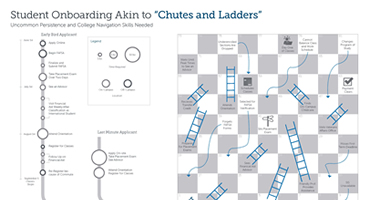Council of Graduate Schools Releases New Report on Graduate Applications and Enrollment
Title: Graduate Enrollment and Degrees 2012-2022
Author: Brian D. McKenzie, Enyu Zhou, and Alessandro Regio
Source: Council of Graduate Schools
The Council of Graduate Schools (CGS) produces an annual report on graduate enrollment and degrees drawing from its yearly survey of the same name, which is co-sponsored by Graduate Record Examinations (GRE). The CGS/GRE Survey of Graduate Enrollment and Degrees is the only national survey that captures data on graduate school applications by area of study as well as first-time and total U.S. graduate enrollment across fields of study and degree levels.
In this year’s report, CGS focused on the role of graduate education, namely master’s, doctoral, and graduate certificate programs, in shaping “the U.S. workforce of tomorrow.” Based on CGS/GRE survey and U.S. Bureau of Labor Statistics data analysis, CGS argued graduate schools must generate 29,000 more educational administrators and educational, guidance, and career counselors to meet imminent labor market needs.
Drawing from 558 institutional responses, key findings from the report include:
- Graduate education application numbers continue to rise while enrollment begins to decline: Graduate education admissions applications rose 3.9 percent while first-time graduate education enrollment declined by 4.7 percent between fall 2021 and fall 2022.
- Institutional type differences in application and enrollment: Master’s colleges and universities showed the greatest increase (18.8 percent) in application numbers and the only increase (2.5 percent) in first-time graduate student enrollment across institutional types. Comparatively, doctoral universities with very high research activities (i.e., R1 institutions) had only a 2.6 percent increase in graduate admissions applications and the greatest decline (6 percent) in first-time graduate student enrollment.
- Enrollment differences across racial and ethnic identity groups: While domestic first-time graduate student enrollment declined by 4.7 percent, first-time graduate student enrollment among international students increased by 10.2 percent. First-time graduate enrollment showed the greatest decline among Black/African American students (7.8 percent), followed by a 5.7 percent decline among Latino students.
- Enrollment differences across gender: Women comprised over half of first-time graduate student enrollment—58 percent of master’s and graduate certificate students and 56.3 percent of doctoral students.
- Enrollment differences across fields of study: Mathematics and computer sciences was the only broad area of study that showed an increase in first-time graduate student enrollment (5.4 percent) between fall 2021 and 2022.Engineering showed the largest decline, with an 8.1 percent reduction in enrollment.
- Credential attainment: Between 2020-21 and 2021-22, doctoral degree completion increased by 3 percent—the only increase in graduate credential attainment in this period. Graduate certificate and master’s degree attainment declined by 1.2 percent and 0.8 percent, respectively.
To read the full report, click here. For ACE’s coverage of past Council of Graduate Schools’ Graduate Enrollment and Degree reports, click here.
—Alyssa Stefanese Yates
If you have any questions or comments about this blog post, please contact us.


